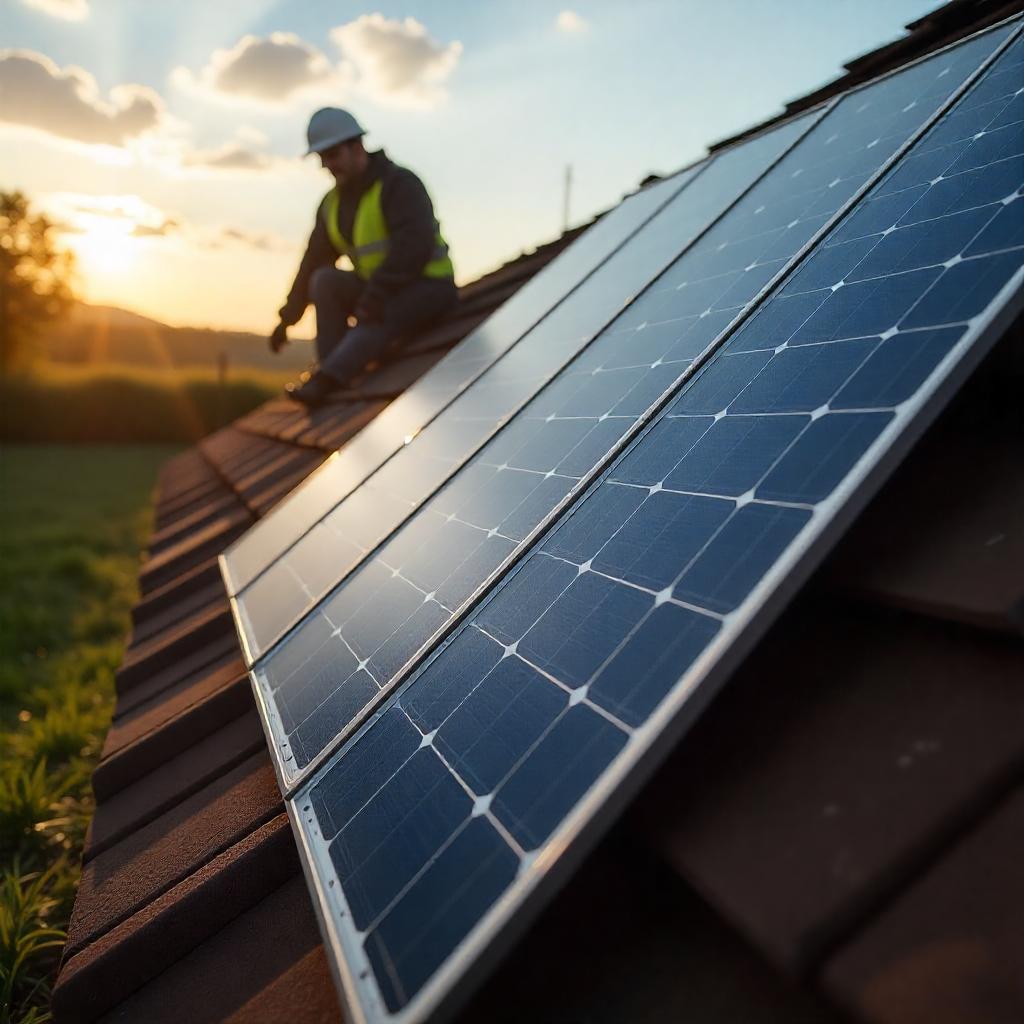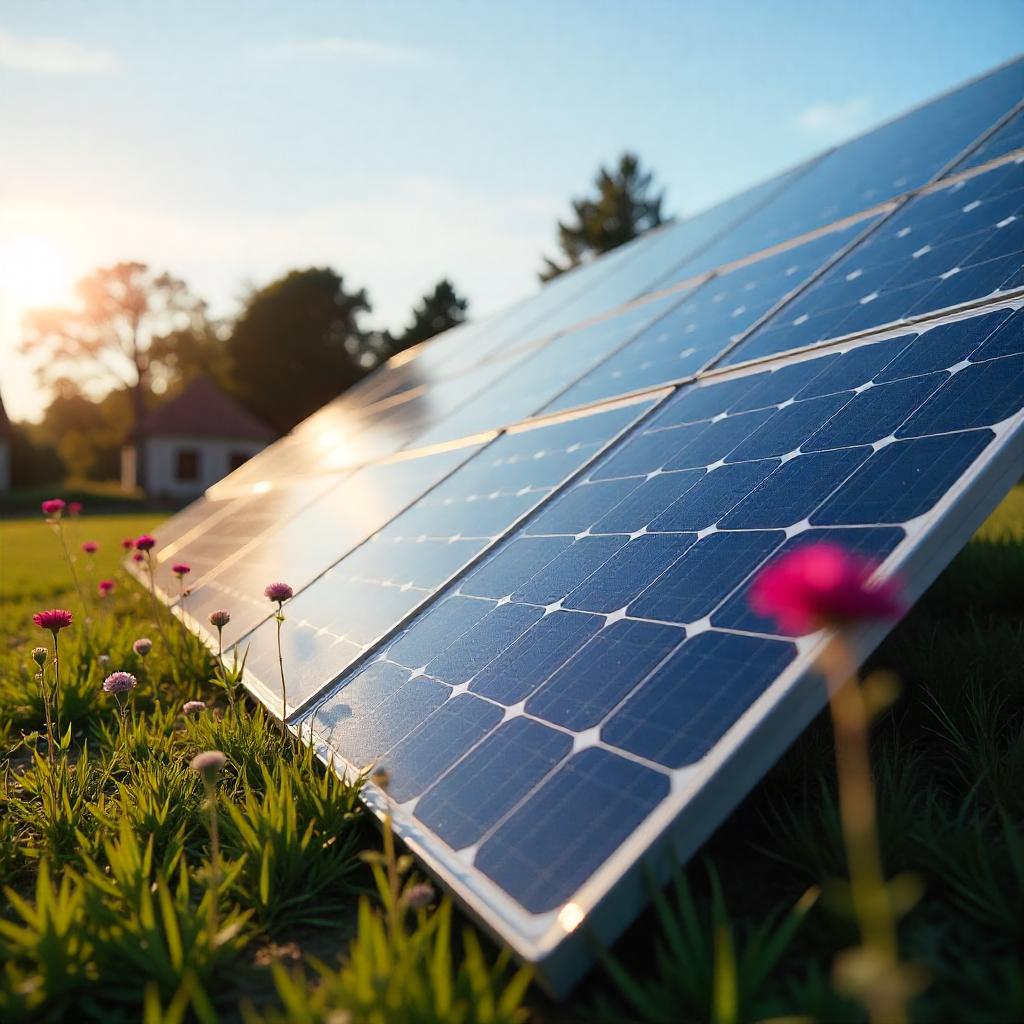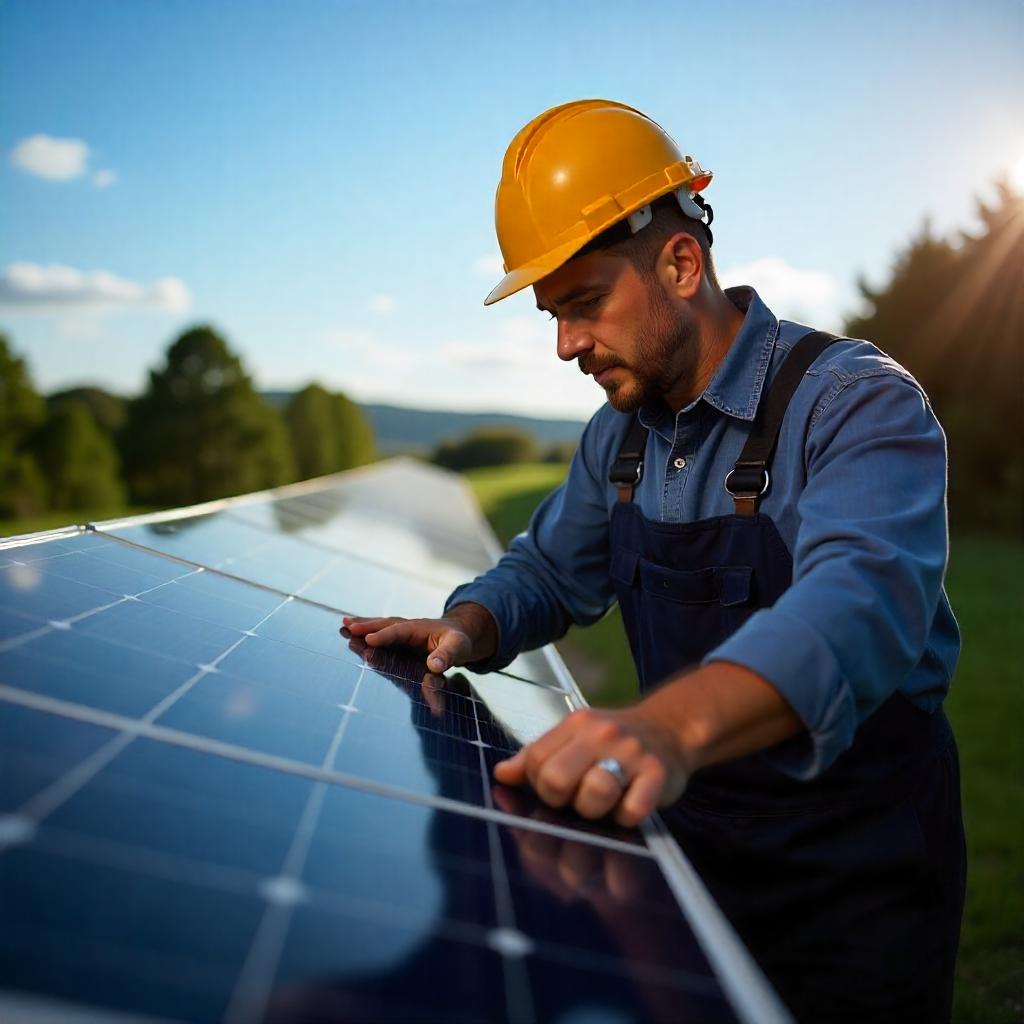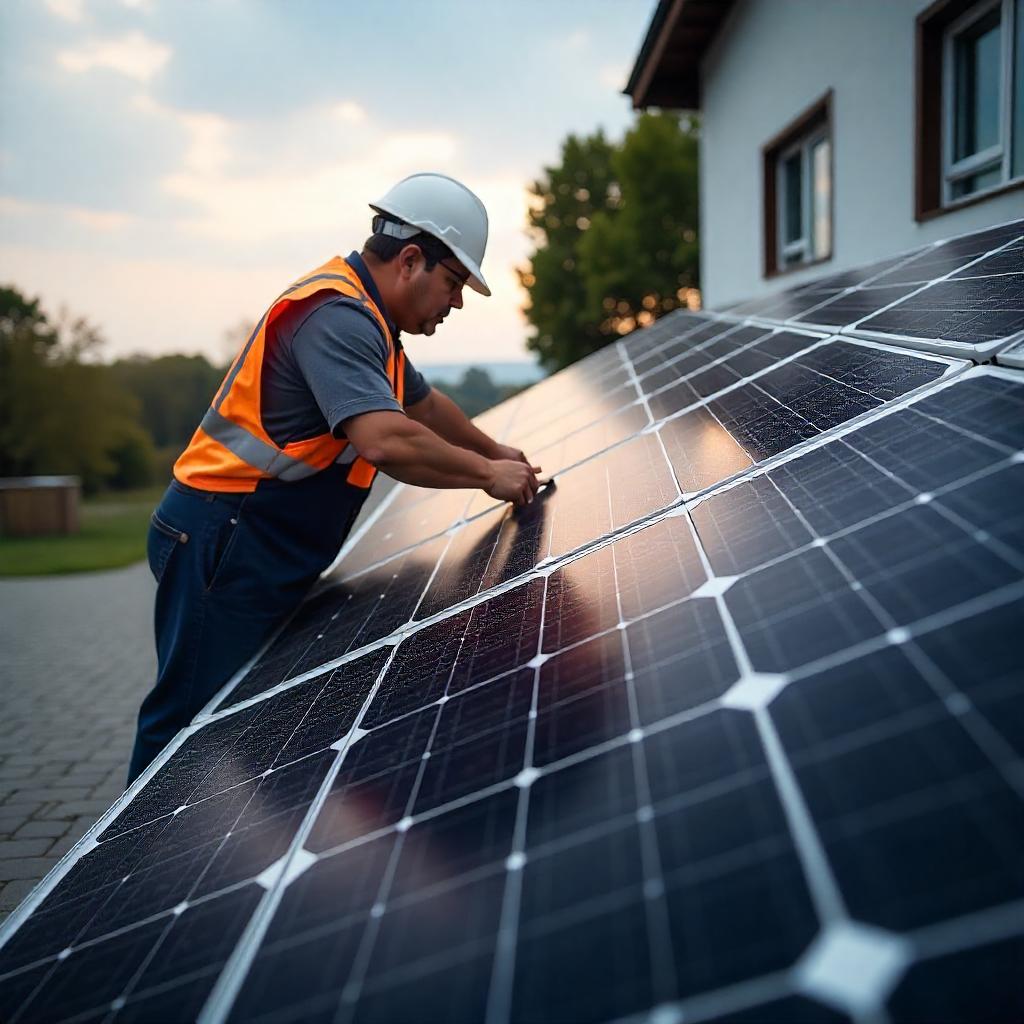10 Watt Solar Panels: Applications, Features, Benefits, and Installation Guide
What is a 10 Watt Solar Panel?
A 10-watt solar panel is a small solar device that generates electricity from sunlight. It can produce up to 10 watts of power under perfect sunlight conditions. These panels are often compact, making them easy to use in various applications.
- Power Output: Up to 10 watts in direct sunlight.
- Typical Dimensions: Usually around 13 to 15 inches in size, making them portable.
- Construction: Made with either monocrystalline or polycrystalline silicon cells.
- Efficiency: Monocrystalline panels generally have higher efficiency, converting about 15% to 20% of sunlight into electricity. Polycrystalline panels are slightly less efficient but are often cheaper.
These solar panels are useful for charging small devices, powering lights, or even supporting small appliances. They are a popular choice for camping, remote locations, and small off-grid systems.
Applications of 10 Watt Solar Panels
10-watt solar panels have many applications. They are small but useful. Here are some common uses for them:
- Charging Small Devices: 10-watt solar panels can charge phones, tablets, and small batteries. They are great for outdoor activities like camping.
- Lighting: These panels can power small LED lights. People use them in gardens or on porches to save energy.
- Water Pumps: Some people use 10-watt solar panels to run small water pumps. These pumps help with watering plants or fish tanks.
- Toys and Gadgets: Kids can use 10-watt solar panels to power toys or gadgets. This is a fun way to learn about solar energy.
- Remote Sensors: 10-watt solar panels can power remote sensors. These sensors can measure weather or monitor gardens.
- Backup Power: They can be part of a backup power system. If the main power goes out, these panels can keep small devices running.
10-watt solar panels are handy. They show how solar energy can be used in daily life.
Technical Specifications and Features
A typical 10-watt solar panel has several important technical specifications. These specifications help people understand how the solar panel works and what it can do. Here are the details presented in a table for better clarity.
| Specification | Details |
| Power Output | 10 watts |
| Voltage | 12 volts |
| Current | 0.83 amps |
| Efficiency | 15-20% |
| Dimensions | 28 x 22 x 1.5 inches |
| Weight | 4-5 pounds |
| Material | Monocrystalline or Polycrystalline |
| Lifespan | 25 years or more |
| Temperature Range | -40 to 85 degrees Celsius |
| Warranty | 25 years |
These specifications show that a 10-watt solar panel is small but effective. It can produce energy from sunlight. The voltage and current ratings indicate how much power the panel can deliver. Efficiency tells how well it converts sunlight into electricity. The dimensions and weight provide information on its size and portability. The choice of material affects performance and durability. The lifespan shows how long the panel can last, while the temperature range indicates where it can operate efficiently. The warranty gives confidence in the product’s quality.
Installation and Setup Guide
Installing a 10-watt solar panel is easy. Here is a step-by-step guide to help anyone set it up.
- Gather materials. You need a 10-watt solar panel, a charge controller, a battery, wires, and a mounting bracket.
- Choose a location. Find a spot that gets a lot of sunlight. Make sure there are no trees or buildings blocking the sun.
- Mount the solar panel. Use the mounting bracket to attach the solar panel to a stable surface. Make sure it is secure and tilted for maximum sun exposure.
- Connect the charge controller. Use the wires to connect the solar panel to the charge controller. The positive wire from the panel goes to the positive input on the controller. The negative wire goes to the negative input.
- Connect the battery. Next, connect the charge controller to the battery. Again, connect the positive wire from the controller to the positive terminal on the battery. Connect the negative wire to the negative terminal.
- Check connections. Ensure all wires are connected properly. Double-check the positive and negative connections.
- Test the setup. After everything is connected, check if the solar panel is charging the battery. You can do this by looking at the charge controller indicator.
- Secure all parts. Once the setup works, secure all wires and parts to avoid any damage from wind or rain.
Now the 10-watt solar panel is ready to use. Enjoy the clean energy!
Maintenance Tips for Longevity
Maintenance tips for longevity are important for keeping solar panels working well. Taking care of solar panels helps them last longer and perform better. Here are some simple tips for maintaining solar panels:
- Clean the panels regularly: Dust and dirt can block sunlight. It is good to wash the panels with water and a soft brush to keep them clean.
- Check for shading: Trees or buildings can create shade. It is essential to ensure nothing blocks the sunlight from hitting the panels.
- Inspect for damage: Look for cracks or loose parts. If there are any issues, fix them quickly to avoid bigger problems.
- Monitor performance: Keep an eye on how much energy the panels produce. If the output drops, it might need attention.
- Keep the area clear: Make sure there is no debris around the panels. This includes leaves, snow, or any other objects that might block sunlight.
- Schedule professional maintenance: It is a good idea to have a professional check the system once a year. They can find problems that might not be visible.
By following these tips, solar panels can work efficiently for many years. Regular care and attention can help ensure they remain a reliable energy source.
Cost and Purchasing Considerations
Cost and purchasing considerations are important when buying 10-watt solar panels. The cost can change based on brand reputation, build quality, and included accessories. Well-known brands may charge more because of their trustworthiness. Strong and durable panels also tend to be pricier. The current market shows that prices for 10-watt solar panels range from ₹4,100 to ₹12,300. Prices can vary by retailer and region. Some solar panels come as part of kits, which include cables and mounting hardware. These kits can increase the overall cost but also provide everything needed for installation.
Advantages and Limitations of 10 Watt Solar Panels
10 Watt solar panels have both advantages and limitations. These points help understand what they can do well and where they might fall short.
Advantages of 10 Watt Solar Panels:
- Portable: 10 Watt solar panels are small and light. This makes them easy to carry. People can use them for camping or outdoor activities.
- Cost-effective: They are usually cheaper than larger solar panels. This means more people can afford them.
- Easy to install: Setting up 10 Watt solar panels is simple. Users can often do it without special tools.
- Good for small devices: They work well for charging small electronics. This includes phones and tablets.
- Eco-friendly: These panels use sunlight to create energy. This helps reduce pollution and protect the environment.
Limitations of 10 Watt Solar Panels:
- Low energy output: 10 Watt solar panels generate limited power. They may not be suitable for larger appliances.
- Weather dependent: Their efficiency drops in cloudy or rainy weather. This can affect how much energy they produce.
- Space requirement: Users may need multiple panels to meet their energy needs. This can take up more space.
- Battery storage needed: For continuous use, users often need batteries to store energy. This adds to the overall cost.
- Short lifespan: Some 10 Watt solar panels may not last as long as larger models. This means users might need to replace them sooner.
Anmak Solar’s Expertise in Solar Panel Installations
Anmak Solar is a trusted provider of solar panel installation services. They specialize in creating customized solutions for homes and businesses. Anmak Solar focuses on quality, efficiency, and making customers happy. They have a lot of experience in installing different sizes of solar panels. This includes small 10-watt panels for special uses. Anmak Solar understands the needs of their clients and works hard to meet those needs.
Conclusion
10-watt solar panels are great for small-scale applications. They work well for powering small devices, lights, or even charging batteries. These panels are easy to install and use. They are also cost-effective, which makes them a smart choice for many people. However, they have some limitations. They may not provide enough power for larger appliances or heavy energy use.
When considering 10-watt solar panels, it is important to assess your specific energy needs. Everyone has different needs based on their devices or usage. Consulting with professionals like Anmak Solar can help. They can provide personalized advice and assist with installation.
Using 10-watt solar panels can be a good option for those who need a bit of extra power. It is essential to understand both their benefits and limits. Take the time to figure out what works best for you.



